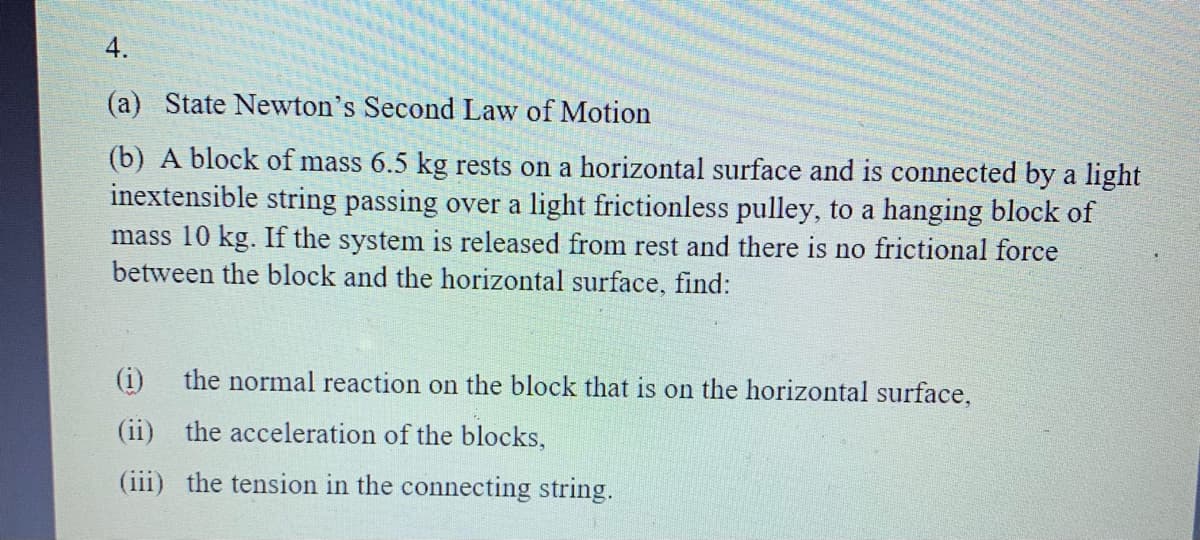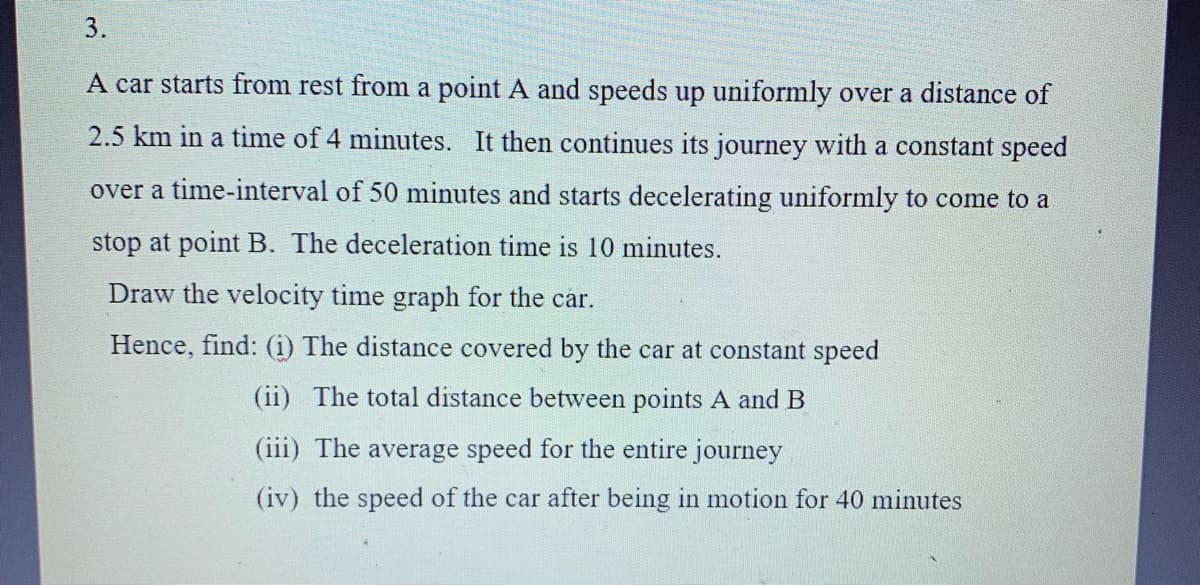(a) State Newton's Second Law of Motion (b) A block of mass 6.5 kg rests on a horizontal surface and is connected by a light inextensible string passing over a light frictionless pulley, to a hanging block of mass 10 kg. If the system is released from rest and there is no frictional force between the block and the horizontal surface, find: (i) the normal reaction on the block that is on the horizontal surface, (ii) the acceleration of the blocks, (iii) the tension in the connecting string.
(a) State Newton's Second Law of Motion (b) A block of mass 6.5 kg rests on a horizontal surface and is connected by a light inextensible string passing over a light frictionless pulley, to a hanging block of mass 10 kg. If the system is released from rest and there is no frictional force between the block and the horizontal surface, find: (i) the normal reaction on the block that is on the horizontal surface, (ii) the acceleration of the blocks, (iii) the tension in the connecting string.
College Physics
1st Edition
ISBN:9781938168000
Author:Paul Peter Urone, Roger Hinrichs
Publisher:Paul Peter Urone, Roger Hinrichs
Chapter2: Kinematics
Section: Chapter Questions
Problem 34PE: In World War II, there were several reported cases of airmen who jumped from their flaming airplanes...
Related questions
Question
100%

Transcribed Image Text:4.
(a) State Newton's Second Law of Motion
(b) A block of mass 6.5 kg rests on a horizontal surface and is connected by a light
inextensible string passing over a light frictionless pulley, to a hanging block of
mass 10 kg. If the system is released from rest and there is no frictional force
between the block and the horizontal surface, find:
(i)
the normal reaction on the block that is on the horizontal surface,
(ii) the acceleration of the blocks,
(iii) the tension in the connecting string.

Transcribed Image Text:3.
A car starts from rest from a point A and speeds up uniformly over a distance of
2.5 km in a time of 4 minutes. It then continues its journey with a constant speed
over a time-interval of 50 minutes and starts decelerating uniformly to come to a
stop at point B. The deceleration time is 10 minutes.
Draw the velocity time graph for the car.
Hence, find: (i) The distance covered by the car at constant speed
(ii) The total distance between points A and B
(iii) The average speed for the entire journey
(iv) the speed of the car after being in motion for 40 minutes
Expert Solution
This question has been solved!
Explore an expertly crafted, step-by-step solution for a thorough understanding of key concepts.
Step by step
Solved in 6 steps with 5 images

Knowledge Booster
Learn more about
Need a deep-dive on the concept behind this application? Look no further. Learn more about this topic, physics and related others by exploring similar questions and additional content below.Recommended textbooks for you

College Physics
Physics
ISBN:
9781938168000
Author:
Paul Peter Urone, Roger Hinrichs
Publisher:
OpenStax College

College Physics
Physics
ISBN:
9781938168000
Author:
Paul Peter Urone, Roger Hinrichs
Publisher:
OpenStax College